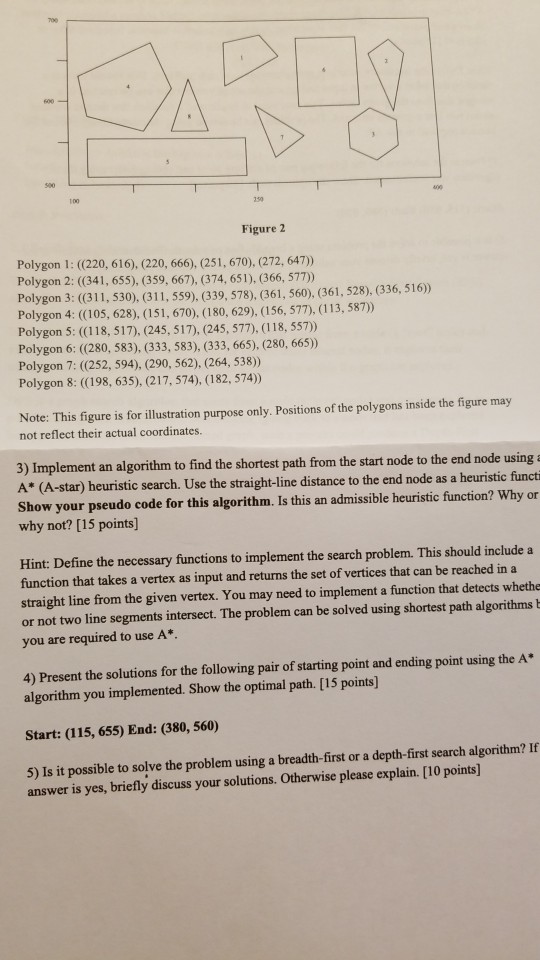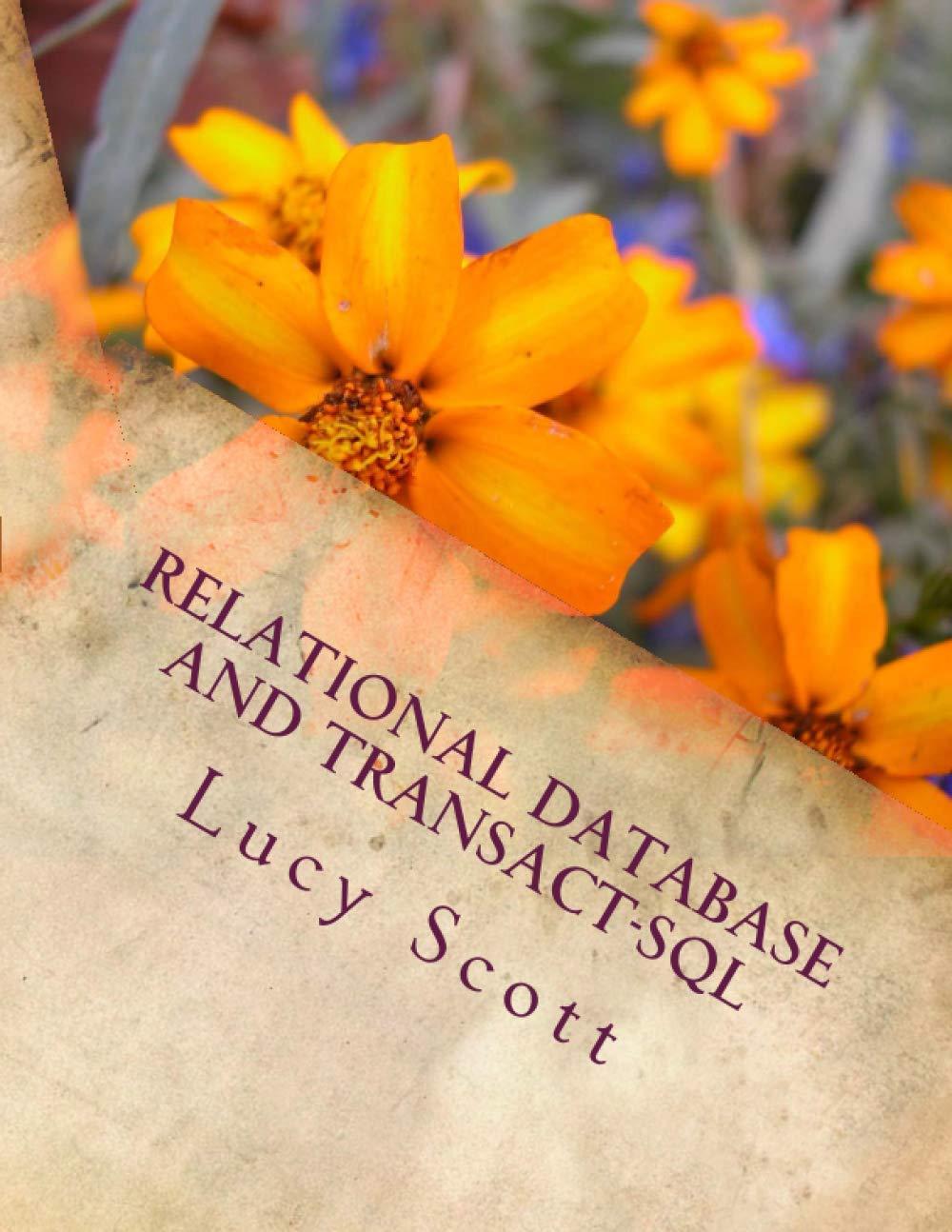Answered step by step
Verified Expert Solution
Question
1 Approved Answer
Figure 2 Polygon 1: ((220, 616), (220, 666), (251, 670), (272, 647) Polygon 2: (341, 655), (359, 667), (374, 651). (366, 577) Polygon 3: ((311,

Figure 2 Polygon 1: ((220, 616), (220, 666), (251, 670), (272, 647) Polygon 2: (341, 655), (359, 667), (374, 651). (366, 577) Polygon 3: ((311, 530). (311, 559), (339, 578), (361, 560), (361, 528), (336, 516)) Polygon 4: (105, 628), (151, 670), (180, 629), (156, 577), (113, 587) Polygon 5: (118, 517), (245, 517), (245, 577), (118, 557) Polygon 6: ((280, 583), (333, 583), (333, 665), (280, 665) Polygon 7: ((252, 594), (290, 562), (264, 538)) Polygon 8: ((198, 635), (217, 574), (182, 574) Note: This figure is for illustration purpose only. Positions of the polygons inside the figure may not reflect their actual coordinates. 3) Implement an algorithm to find the shortest path from the start node to the end node using A* (A-star) heuristic search. Use the straight-line distance to the end node as a heuristic funct Show your pseudo code for this algorithm. Is this an admissible heuristic function? Why or why not? [15 points] Hint: Define the necessary functions to implement the search problem. This should include a function that takes a vertex as input and returns the set of vertices that can be reached in a straight line from the given vertex. You may need to implement a function that detects whethe or not two line segments intersect. The problem can be solved using shortest path algorithms b you are required to use A*. 4) Present the solutions for the following pair of starting point and ending point using the A* algorithm you implemented. Show the optimal path. [15 points) Start: (115, 655) End: (380, 560) 5) Is it possible to solve the problem using a breadth-first or a depth-first search algorithm? If answer is yes, briefly discuss your solutions. Otherwise please explain. [10 points)
Step by Step Solution
There are 3 Steps involved in it
Step: 1

Get Instant Access to Expert-Tailored Solutions
See step-by-step solutions with expert insights and AI powered tools for academic success
Step: 2

Step: 3

Ace Your Homework with AI
Get the answers you need in no time with our AI-driven, step-by-step assistance
Get Started


